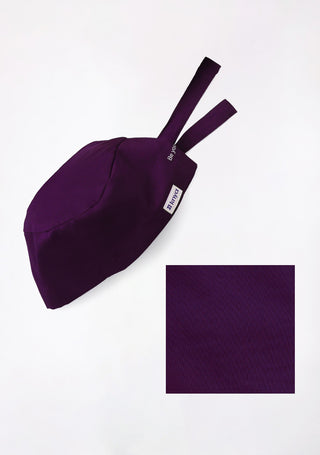The humble stethoscope is more than just a medical accessory—it's a diagnostic powerhouse. In a profession where accuracy can be a matter of life and death, investing in the right stethoscope is not a luxury but a necessity. Whether you’re a seasoned physician, an aspiring medical student, or a frontline nurse, your ability to make confident clinical decisions starts with being able to hear what the body is trying to say. And for that, the right stethoscope makes all the difference.
The Role of a Stethoscope in Clinical Practice
At its core, a stethoscope is a device used to listen to internal sounds of the body, such as the heartbeat, lung sounds, and bowel movements. This practice, known as auscultation, provides valuable clues to a patient’s health status. By amplifying these internal sounds, stethoscopes help doctors and nurses detect abnormal rhythms, fluid in the lungs, restricted airflow, and other signs of disease or dysfunction.
Medical professionals rely on this tool for:
- Cardiac assessments – detecting murmurs, irregular heartbeats, and valve problems.
- Respiratory evaluations – identifying wheezes, crackles, or decreased breath sounds.
- Gastrointestinal checks – listening for bowel activity or blockages.
- Blood pressure measurement – used with a sphygmomanometer to hear Korotkoff sounds.
Given how much information a stethoscope conveys, the quality and suitability of the instrument directly impact diagnostic accuracy.
Upgrade your auscultation capabilities with Knya's 6sense stethoscope, designed with advanced technology.
How Stethoscopes Work?
The basic components of a stethoscope include:
- Chestpiece (or head) – contains a diaphragm and/or bell to pick up sound.
- Diaphragm – better for high-frequency sounds like heartbeats or lung sounds.
- Bell – better for low-frequency sounds such as certain heart murmurs.
- Tubing – carries the sound to the earpieces.
- Earpieces – where the clinician hears the amplified sound.
The simplicity of this mechanism is deceptive; small differences in design and material quality can dramatically affect sound clarity, comfort, and durability.
Why the Right Stethoscope Matters?
Sound Quality and Clarity
In auscultation, details matter. A good stethoscope transmits even the faintest of sounds clearly. Low-quality stethoscopes can muffle sounds or fail to capture subtle abnormalities, leading to misdiagnosis or missed diagnoses. Especially in noisy environments like emergency rooms or busy clinics, a high-clarity stethoscope can help cut through ambient noise and focus on the patient's internal sounds.
Specialization and Compatibility
Not all stethoscopes are made for all kinds of medical professionals. For example:
- Cardiologists may require high-end models designed to detect intricate heart sounds and subtle murmurs.
- Pediatricians might use smaller, child-friendly stethoscopes with appropriately sized diaphragms.
- Nurses and general practitioners typically opt for reliable, multipurpose stethoscopes that balance quality with affordability.
- Emergency medical technicians (EMTs) often need durable, lightweight stethoscopes with good noise isolation.
Using the wrong stethoscope for a particular specialty can limit the practitioner’s ability to hear critical sounds and respond accordingly.
Comfort and Ergonomics
Medical professionals often wear their stethoscopes for long hours and use them frequently throughout the day. A poorly designed stethoscope can cause ear discomfort, neck strain, or simply fatigue over time. Lightweight, ergonomically designed models with soft-seal ear tips and adjustable headsets enhance user comfort and usability.
Durability and Reliability
A stethoscope is not a disposable tool. In fact, a good one is a long-term investment. High-quality models are made from strong, flexible materials that resist wear, kinks, and cracking. Stainless steel chest pieces, dual-lumen tubing, and latex-free materials can all contribute to better longevity and performance over years of daily use.
Noise Isolation
In busy clinical environments, background noise is inevitable. Higher-end stethoscopes often have noise-reducing features, such as double-lumen tubing or tunable diaphragms, which help isolate body sounds from environmental noise. This is especially crucial in settings like ambulances, ICUs, or operating rooms where clear auscultation is non-negotiable.
Express your style! Shop our new 6sense stethoscope, now available in three stunning colors.
Types of Stethoscopes
There are several types of stethoscopes available, each with its own advantages:
Acoustic Stethoscopes
These are the most commonly used and traditional types. They rely on air-filled tubes to transmit sound. They are simple, durable, and don't require batteries.
Pros:
- Affordable
- Easy to use
- Reliable for most general practices
Cons:
- Sound may be less amplified than in electronic models
- Ambient noise interference can be a problem
Electronic Stethoscopes
These stethoscopes use electronic amplification to enhance body sounds. Some models even come with Bluetooth connectivity, recording features, or noise-canceling technology.
Pros:
- Enhanced sound quality
- Useful for telemedicine and recording
- Better for hearing faint sounds or working in noisy environments
Cons:
- More expensive
- Requires batteries or charging
- Slight learning curve
Pediatric and Infant Stethoscopes
Designed with smaller chest pieces and softer materials, these stethoscopes help detect sounds in smaller, more delicate patients.
Teaching Stethoscopes
These feature dual headsets so instructors and students can listen simultaneously, making them ideal for training and learning environments.
The Stethoscope as a Symbol and Tool
Beyond its functional role, the stethoscope symbolizes the medical profession. It’s often the first tool a medical student purchases and the one they carry throughout their career. It represents trust, skill, and the intimate connection between practitioner and patient.
But symbolism aside, it's important not to let sentimentality override functionality. Professionals should periodically reassess their stethoscope's performance and consider upgrades as technology evolves and their needs change.
Tips for Choosing the Right Stethoscope
- Know your specialty – Choose a model suited to your field of practice.
- Check sound quality – Read reviews, test different models, or consult colleagues.
- Focus on comfort – Choose ear tips and tubing that feel right for daily wear.
- Assess build quality – Look for sturdy materials and solid construction.
- Mind the budget – While high-end models offer great features, excellent mid-range options also exist.
- Maintenance matters – Clean and store your stethoscope properly to extend its life.












